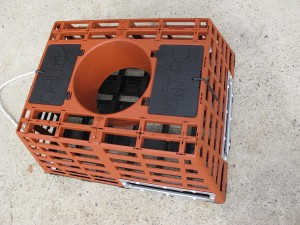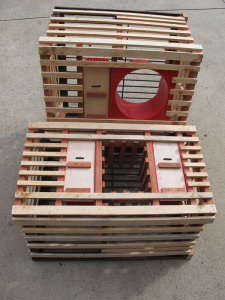PLASTIC OR TIMBER? Which craypots catch best?
Over the past few years we’ve talked to literally thousands of fishermen, and built up a pretty good picture of the pros and cons of plastic craypots. The advantages of plastic craypots are obvious – no rust, no rotting and replacement of battens, no soaking, they’re easier to lift, and much kinder on backs, boats and hands.The major con is that timber craypots indisputably catch better than plastic – for the first year at least, although not necessarily a huge amount more. We reckon plastic craypots catch around 50-75% of that of timber craypots over the first year if they’re well ballasted, but then catch rates improve significantly afterwards. This may be due to the changes in the chemicals or the feel of plastic – we don’t know for sure, but pro fishermen regularly find their catches improve after plastic necks, lids and baskets have been exposed to the sun for a year or more. So, given a bit of sun and wear and tear, plastic starts to catch well.
Plastic craypots do need to be well ballasted so they don’t move. Our Katipo plastic craypots have a wide base and are inherently more stable than other plastic pots (and already have baskets installed) so 10kg at the bridle end stops the rope and floats dragging the pot and should work fine in most conditions – but an additional 5kg at the other end certainly won’t hurt in deeper water or where there’s a bit of surge or swell.
We have plenty of both timber and plastic craypots in stock, and the crayfishing season is well and truly up and running now, so give us a call for more info on 9337 2211.





Sorry, comments are closed for this post.